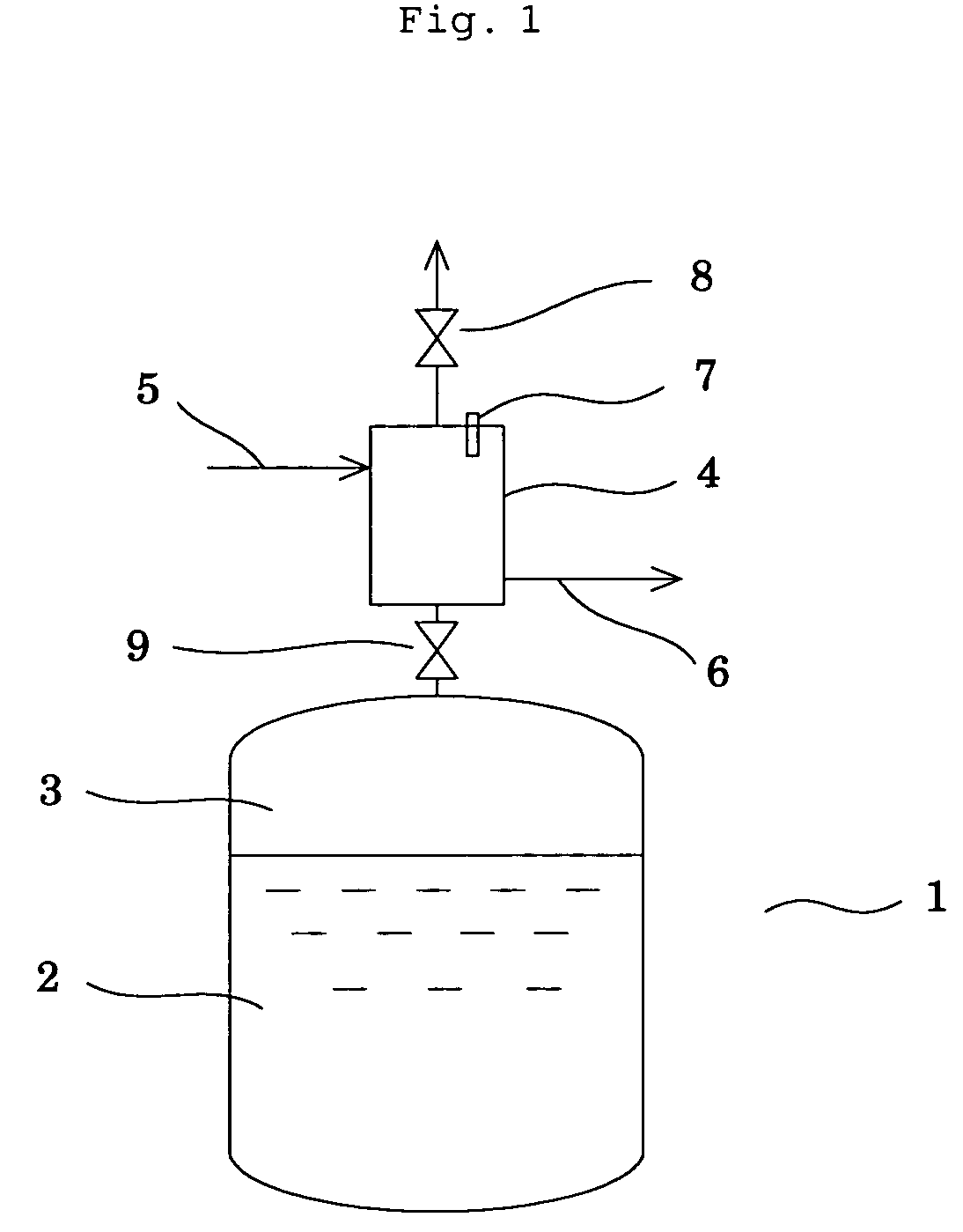Process for production of polyarylene sulfide
a technology of arylene sulfide and polyethylene sulfide, which is applied in the field of polyarylene sulfide production, can solve the problems of not being able to efficiently cool the gas component in the vapor phase, and achieve the effect of efficient and economical production of a poly
- Summary
- Abstract
- Description
- Claims
- Application Information
AI Technical Summary
Benefits of technology
Problems solved by technology
Method used
Image
Examples
example 1
A Method for Removing Heat by Condensing and Refluxing Vapor Components after Purging Non-Condensable Gases
1. Dehydration Process
[0087]A 20 liter autoclave (polymerizer) with an agitator is provided with an electric heater for allowing conduction heating from a side wall and a thermometer and a pressure gauge for detecting internal temperature and pressure respectively. A cylindrical reflux condenser with an inner diameter of 20 mm and a height of 250 mm is installed above the autoclave in an upright position.
[0088]Into the autoclave, 6,000 g of NMP and 3,800 g of sodium sulfide pentahydrate were charged, purged with nitrogen gas and allowed to gradually increase to a temperature of 200° C. while agitated, allowing evaporation of 1,650 g of water and 1,100 g of NMP. At this time, 0.50 mole of hydrogen sulfide (H2S) was also evaporated. Sodium sulfide after the dehydration process were 22.04 moles.
[0089]Then, the autoclave was cooled to 180° C., and was added with 3,435 g of p-dichlo...
example 2
A Method for Removing Heat by Condensing and Refluxing Vapor Components While Immobilizing the Non-Condensable Gas in the Liquid Phase with a Mixture of Sodium Hydroxide and Water Added in the Liquid Phase
[0097]In Example 1, a mixture of 100 g of sodium hydroxide and 200 g of water was injected into the autoclave after polymerization. It took three minutes for the injection, and the temperature inside the autoclave became 250° C. and the pressure inside the autoclave became 1.52×106 Pa. After the completion of the injection, cooling was started by passing cooling water through the jacket of the reflux condenser. In this manner, the low boiling gas component (A1) was absorbed and immobilized from the vapor phase into the liquid phase, and at the same time the condensation and reflux of the high boiling gas component (A2) was continued. The operation after the cooling was performed in the same manner as in Example 1, and dry PPS was recovered. In this method, the time required for rea...
PUM
| Property | Measurement | Unit |
|---|---|---|
| Temperature | aaaaa | aaaaa |
| Temperature | aaaaa | aaaaa |
| Temperature | aaaaa | aaaaa |
Abstract
Description
Claims
Application Information
 Login to View More
Login to View More - R&D
- Intellectual Property
- Life Sciences
- Materials
- Tech Scout
- Unparalleled Data Quality
- Higher Quality Content
- 60% Fewer Hallucinations
Browse by: Latest US Patents, China's latest patents, Technical Efficacy Thesaurus, Application Domain, Technology Topic, Popular Technical Reports.
© 2025 PatSnap. All rights reserved.Legal|Privacy policy|Modern Slavery Act Transparency Statement|Sitemap|About US| Contact US: help@patsnap.com

